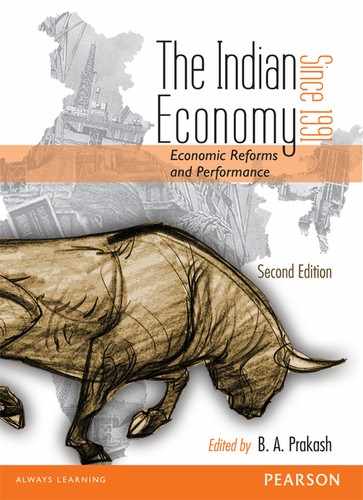Chapter 10
1 This was reinforced by the channelling of public saving by an elaborate banking network to the ‘socially productive’ uses by an elaborate mechanism of directed credit programmes and concessional interest rates for ‘priority sectors’.
2 While the CRR is the proportion of the total deposits the banks have to deposit with the central bank, SLR is the proportion of deposits the banks are obliged to hold in the government and other approved securities. These deposits were made at below market interest rates.
3 The development of the credit market plays an important role in the monetary transmission mechanism. The traditional interest rate channel, represented by the ‘money view’, mainly focuses on the liability side as the banks create money through chequable deposits. The asset side is not emphasized as the firms’ financial structure and is believed to be neutral to borrowings through loans from the banks or through issuance of securities. This is based on the assumption that different financial assets such as bonds and bank loans are perfect substitutes. However, in terms of ‘credit view’, the bonds and bank loans are not seen as perfect substitutes primarily because of information asymmetries. The firms facing informational problems find it more expensive to borrow through bonds than availing loans from the banks.
4 The domestic scheduled commercial banks and foreign banks are required to extend a minimum of 40 per cent and 32 per cent, respectively, of their net bank credit (NBC) to the priority sector with sub-targets set for lending to the various sub-sectors.
